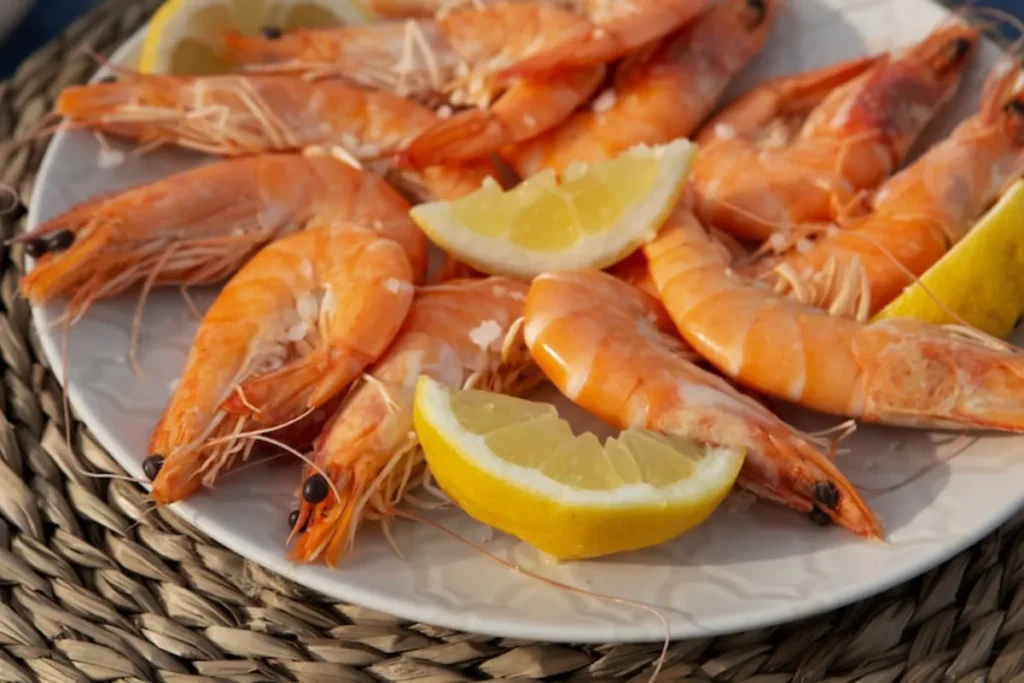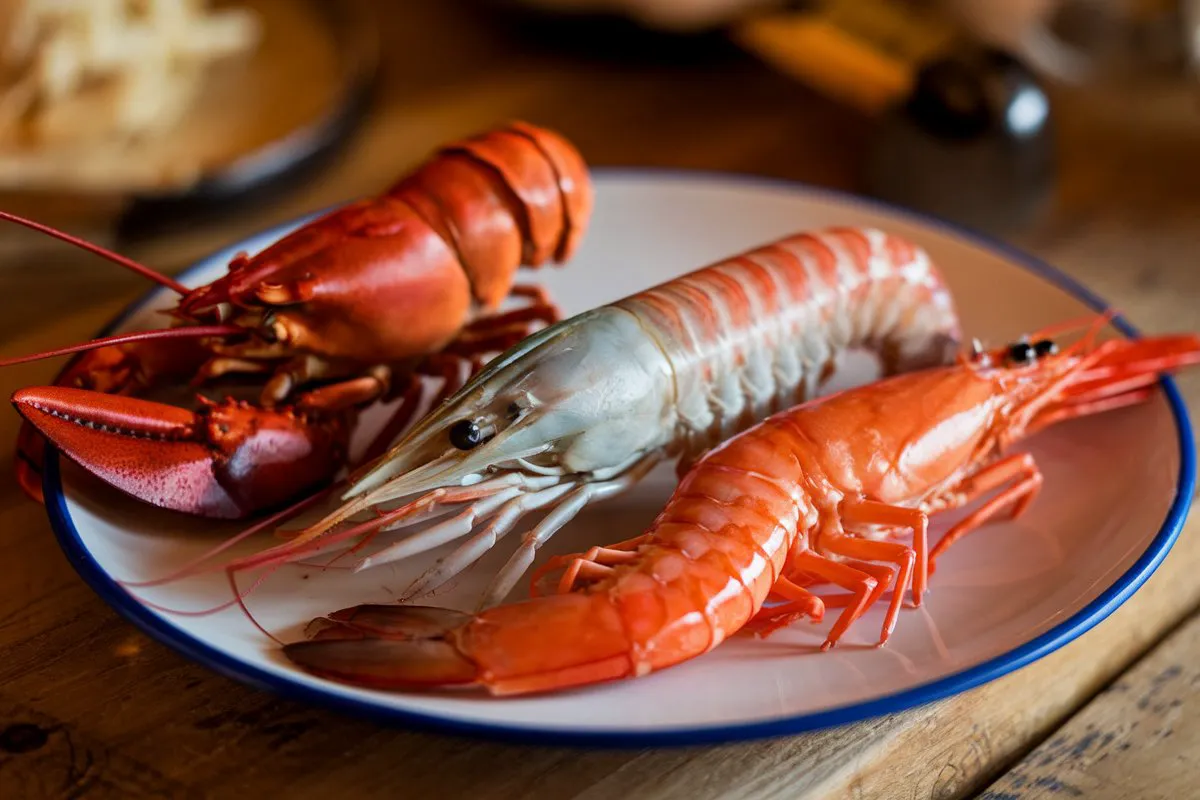Seafood lovers often encounter terms like shrimp, lobster, and langostino on restaurant menus or grocery shelves. But what exactly is langostino? Is it a shrimp, a lobster, or something entirely different? This question has puzzled many, as langostino is often marketed as a lobster alternative, yet it looks like shrimp. The confusion comes from the fact that langostino shares characteristics with both.
In this blog, we’ll clear up the mystery of langostino, exploring its true identity and answering the common question: Is langostino a shrimp or lobster? By the end, you’ll not only know the answer but also have some amazing langostino recipes to try at home.
What Is Langostino?
Before diving into whether langostino is a shrimp or lobster, it’s essential to understand what langostino actually is. The word “langostino” is a Spanish term that can refer to different species depending on the region. In the United States, langostino usually refers to the tail meat of a small crustacean related to the squat lobster family, not actual lobsters or shrimp.
Langostino is often described as a cross between shrimp and lobster because it shares the tender, sweet flavor of lobster while resembling shrimp in size. However, biologically speaking, langostino is neither shrimp nor true lobster but belongs to a group of small crustaceans known as squat lobsters.
Langostinos are commonly found in the cold waters off the coast of Chile and Peru, and they’ve become a popular seafood option worldwide due to their affordability and versatility in cooking.
The Difference Between Langostino, Shrimp, and Lobster
The confusion surrounding whether langostino is a shrimp or lobster stems from the fact that it has qualities of both, but there are distinct differences between these three types of seafood.
Langostino vs. Shrimp
Langostino and shrimp are similar in size and appearance, which is why many people mistake them for each other. However, they are from completely different species. Shrimp belongs to the crustacean family known as Decapoda, while langostino comes from the Anomura group, more closely related to crabs and squat lobsters.
While shrimp has a firmer texture, langostino offers a sweeter, more delicate meat that falls apart more easily. The taste of langostino is often compared to lobster, making it a favorite for seafood lovers looking for a budget-friendly alternative to pricier lobster dishes.
Langostino vs. Lobster
Langostino’s flavor is more similar to lobster than shrimp, which is why it’s often marketed as a “lobster alternative.” However, langostino is much smaller than a traditional lobster, typically about the size of a large shrimp.
Lobster meat tends to be firmer, denser, and richer in flavor, while langostino has a lighter, sweeter taste. Lobster is also more expensive, whereas langostino offers a more affordable way to enjoy lobster-like flavors without spending a fortune.
Why the Confusion?
Part of the confusion between langostino, shrimp, and lobster comes from the way langostino is marketed in the U.S. In some instances, restaurants and suppliers label langostino as “lobster,” particularly in dishes like lobster bisque or lobster rolls. However, it’s important to note that langostino is not a true lobster but rather a squat lobster. Its similar flavor and texture allow it to act as a substitute in many recipes.
Moreover, the seafood industry often uses different names for the same species across various regions. For example, langostino may also be referred to as “langoustine” in Europe, though langoustines are a separate species altogether. These marketing techniques can make it difficult for consumers to understand exactly what they’re eating.
Cooking with Langostino: Why It’s Worth Trying
Even though langostino isn’t technically a shrimp or lobster, it’s a delicious and versatile seafood option that deserves attention. The smaller size of langostino tails makes them perfect for quick, easy meals that still pack a punch of flavor. And since they’re often sold pre-cooked and frozen, they’re incredibly convenient for home cooks.
Langostino’s sweet, tender meat can be used in a variety of dishes, from pastas to tacos to salads. Below, we’ll share a few fantastic recipes that showcase the versatility of langostino tails and make them the star of the meal.

Recipe 1: Creamy Langostino Pasta
One of the most popular ways to use langostino is in pasta. This creamy langostino pasta dish is simple, quick, and incredibly satisfying, perfect for a weeknight dinner or a special occasion.
Ingredients:
- 1 pound of langostino tails (thawed if frozen)
- 8 oz of fettuccine or linguine pasta
- 4 tablespoons unsalted butter
- 4 cloves garlic, minced
- 1 cup heavy cream
- ½ cup grated Parmesan cheese
- 1 lemon (for zest and juice)
- Salt and pepper to taste
- Fresh parsley for garnish
Instructions:
- Cook the Pasta: Bring a large pot of salted water to a boil and cook the pasta according to the package instructions until al dente. Drain and set aside, reserving a cup of pasta water in case you need it for the sauce.
- Sauté the Garlic: In a large skillet, melt the butter over medium heat. Add the minced garlic and cook until fragrant, about 1-2 minutes.
- Add the Langostino: Stir in the thawed langostino tails and cook for about 2-3 minutes, just until they’re warmed through. Since langostino is pre-cooked, you don’t want to overcook it.
- Make the Sauce: Pour in the heavy cream and bring to a gentle simmer. Stir in the grated Parmesan cheese and lemon juice, allowing the sauce to thicken slightly.
- Combine with Pasta: Add the cooked pasta to the skillet and toss to coat in the creamy sauce. If the sauce is too thick, add some reserved pasta water to reach your desired consistency.
- Serve and Garnish: Plate the pasta and garnish with fresh parsley, lemon zest, and additional Parmesan cheese if desired. Serve immediately.
Recipe 2: Langostino Tacos with Avocado Crema
Langostino tacos are a fun and flavorful way to enjoy this seafood, especially when paired with a refreshing avocado crema.
Ingredients:
- 1 pound of langostino tails (thawed if frozen)
- 8 small corn tortillas
- 1 avocado
- ¼ cup sour cream
- Juice of 1 lime
- 2 cups shredded cabbage
- 1 tablespoon olive oil
- Salt and pepper to taste
- Fresh cilantro for garnish
Instructions:
- Make the Avocado Crema: In a blender, combine the avocado, sour cream, lime juice, and a pinch of salt. Blend until smooth and creamy. Set aside.
- Sauté the Langostino: Heat the olive oil in a skillet over medium heat. Add the thawed langostino tails and season with salt and pepper. Cook for 2-3 minutes until warmed through.
- Assemble the Tacos: Warm the tortillas in a dry skillet or microwave. Add a spoonful of the langostino to each tortilla, followed by a handful of shredded cabbage. Drizzle the avocado crema on top and garnish with fresh cilantro.
- Serve: Serve the tacos with lime wedges for an extra burst of citrus flavor.
Recipe 3: Langostino and Corn Chowder
Langostino adds a touch of luxury to this hearty, comforting corn chowder. This recipe is perfect for cool evenings when you’re craving something rich and flavorful.
Ingredients:
- 1 pound of langostino tails (thawed if frozen)
- 4 slices of bacon, chopped
- 1 onion, diced
- 3 cloves garlic, minced
- 3 cups corn kernels (fresh or frozen)
- 2 cups chicken or vegetable broth
- 1 cup heavy cream
- 2 medium potatoes, peeled and diced
- Salt and pepper to taste
- Fresh chives for garnish
Instructions:
- Cook the Bacon: In a large pot or Dutch oven, cook the chopped bacon over medium heat until crispy. Remove the bacon with a slotted spoon and set aside, leaving the rendered fat in the pot.
- Sauté the Vegetables: Add the diced onion and garlic to the pot and sauté in the bacon fat until softened, about 3-4 minutes.
- Add the Potatoes and Corn: Stir in the diced potatoes and corn, then pour in the broth. Bring the mixture to a simmer and cook until the potatoes are tender, about 15 minutes.
- Blend Half the Soup: Using an immersion blender or regular blender, puree about half of the soup to create a creamy texture while leaving some chunks.
- Add the Cream and Langostino: Stir in the heavy cream and langostino tails, and cook for another 5 minutes until the langostino is heated through.
- Serve and Garnish: Ladle the chowder into bowls and top with the crispy bacon and fresh chives.
Why You Should Try Langostino
Now that we’ve cleared up the question, “Is langostino a shrimp or lobster?”, and explored its versatility, it’s clear that langostino offers the best of both worlds. While it may not be a true shrimp or lobster, langostino’s sweet, tender meat makes it a fantastic option for a wide variety of dishes.
If you enjoy the taste of lobster but don’t want to splurge on it, or if you’re looking for a unique alternative to shrimp in your favorite recipes, langostino is worth trying. It’s budget-friendly, easy to cook, and delicious, making it a great addition to your seafood repertoire.
Conclusion: Is Langostino a Shrimp or Lobster?
To sum it up, langostino is neither a shrimp nor a lobster. It belongs to the squat lobster family, a type of crustacean that shares qualities with both shrimp and lobster. While it’s often confused with these two seafood types, langostino stands out on its own for its delicate, sweet flavor and versatile use in cooking.
Next time you’re at the store or preparing a seafood meal, consider giving langostino a try. Whether you’re making pasta, tacos, or chowder, it’s sure to add a touch of gourmet flair to your dish without the high price tag of lobster.
FAQ
1. Is langostino a shrimp or lobster?
Langostino is neither shrimp nor true lobster. It’s a squat lobster, a small crustacean related to crabs.
2. Does langostino taste like shrimp?
Langostino tastes sweeter and more delicate than shrimp, with a flavor closer to lobster.
3. Can langostino be used in place of lobster in recipes?
Yes, langostino can be used as a substitute for lobster in many recipes. It’s a budget-friendly alternative with a similar flavor profile.
4. How should I cook langostino?
Langostino is often sold pre-cooked, so it’s best to gently sauté or reheat it in sauces, pasta dishes, tacos, or chowder.
5. Where can I buy langostino?
Langostino is usually available in the frozen seafood section of grocery stores or through online seafood retailers.
